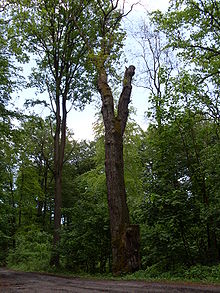



Anatural monument is a natural or cultural feature of outstanding or unique value because of its inherent rarity, representative of aesthetic qualities, or cultural significance.[1] They can be natural geological and geographical features such as waterfalls, cliffs, craters, fossil, sand dunes, rock forms, valleys and coral reefs. Locations important to faith groups may be considered natural monuments. Archeological and historical sites linked to the natural environment are also included, such as cave art.[2] This is especially true when relevant to the land of Indigenous Peoples.
Under the International Union for Conservation of Nature and Natural Resources[3] guidelines, natural monuments are level III, described as:
This is a lower level of protection than level II (national parks) and level I (wilderness areas).
The European Environment Agency's guidelines for selection of a natural monument are:[4]
| National |
|
|---|---|
| Other |
|